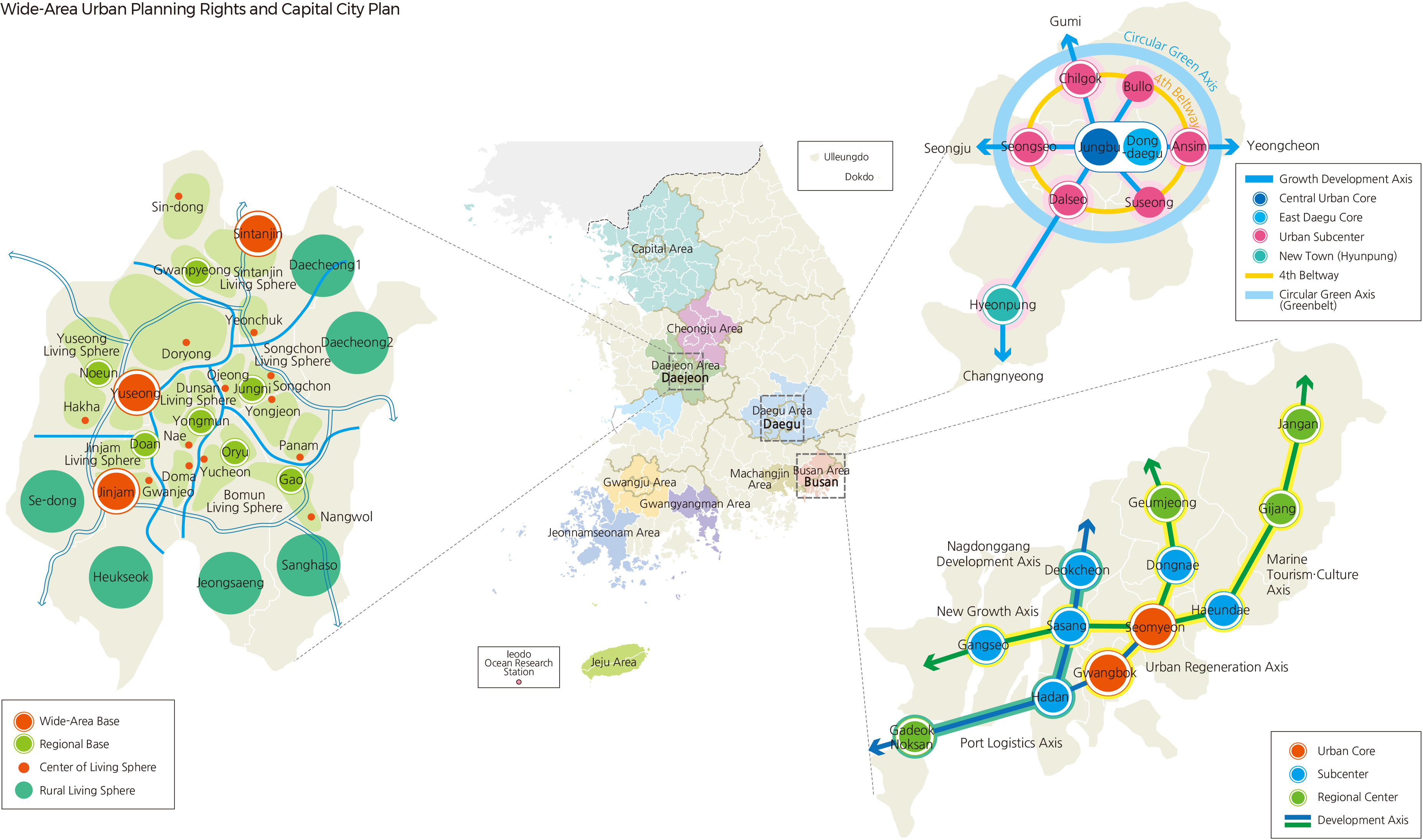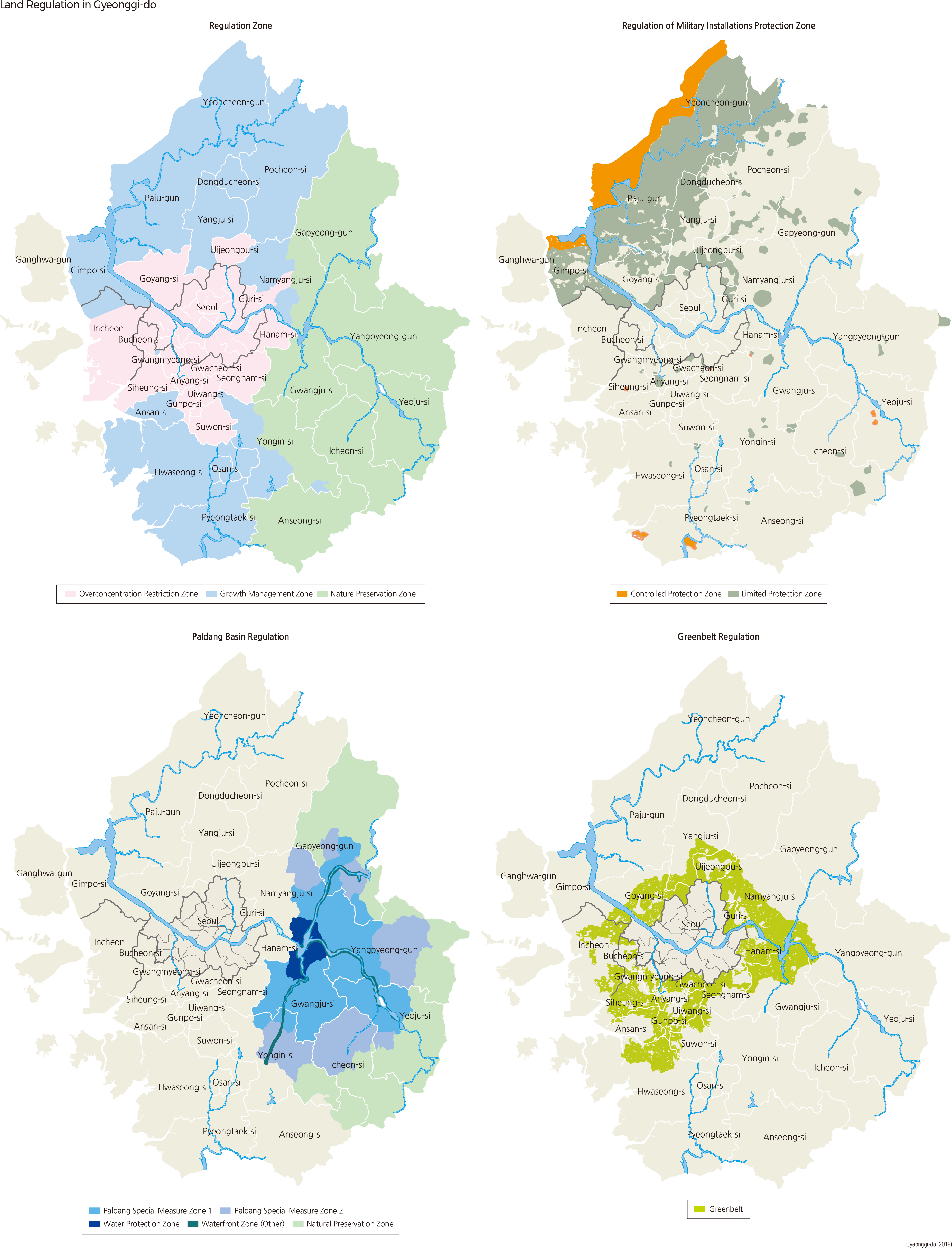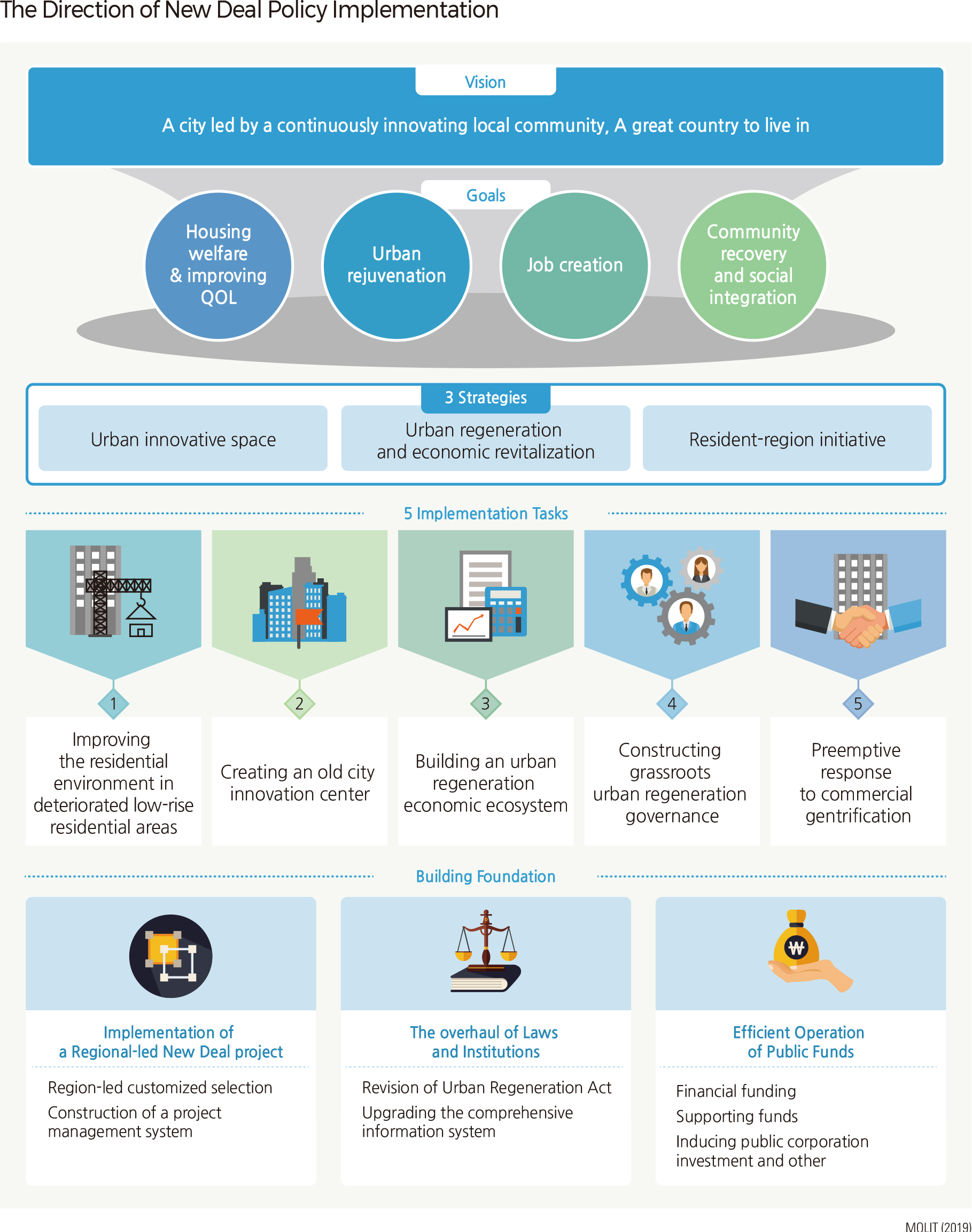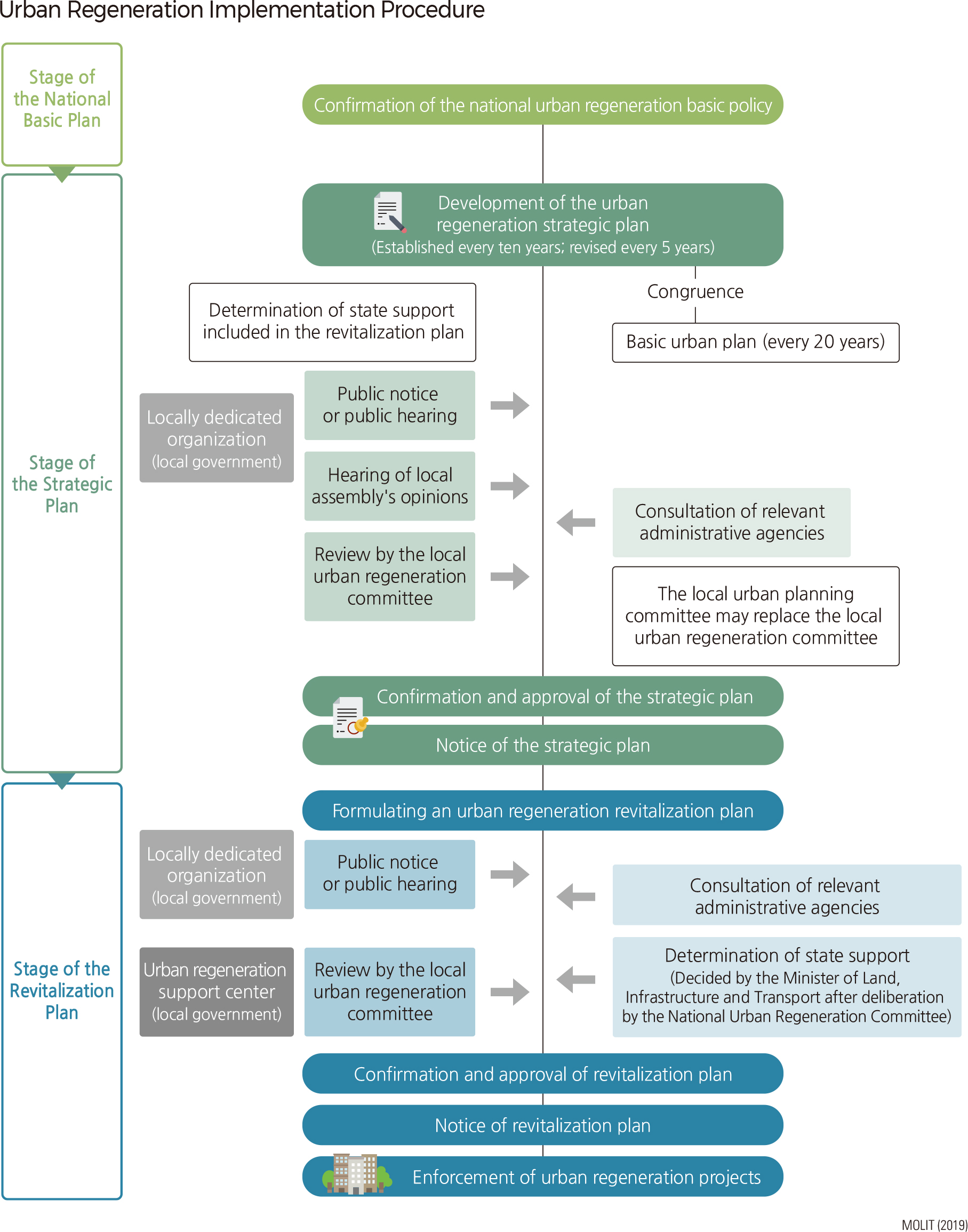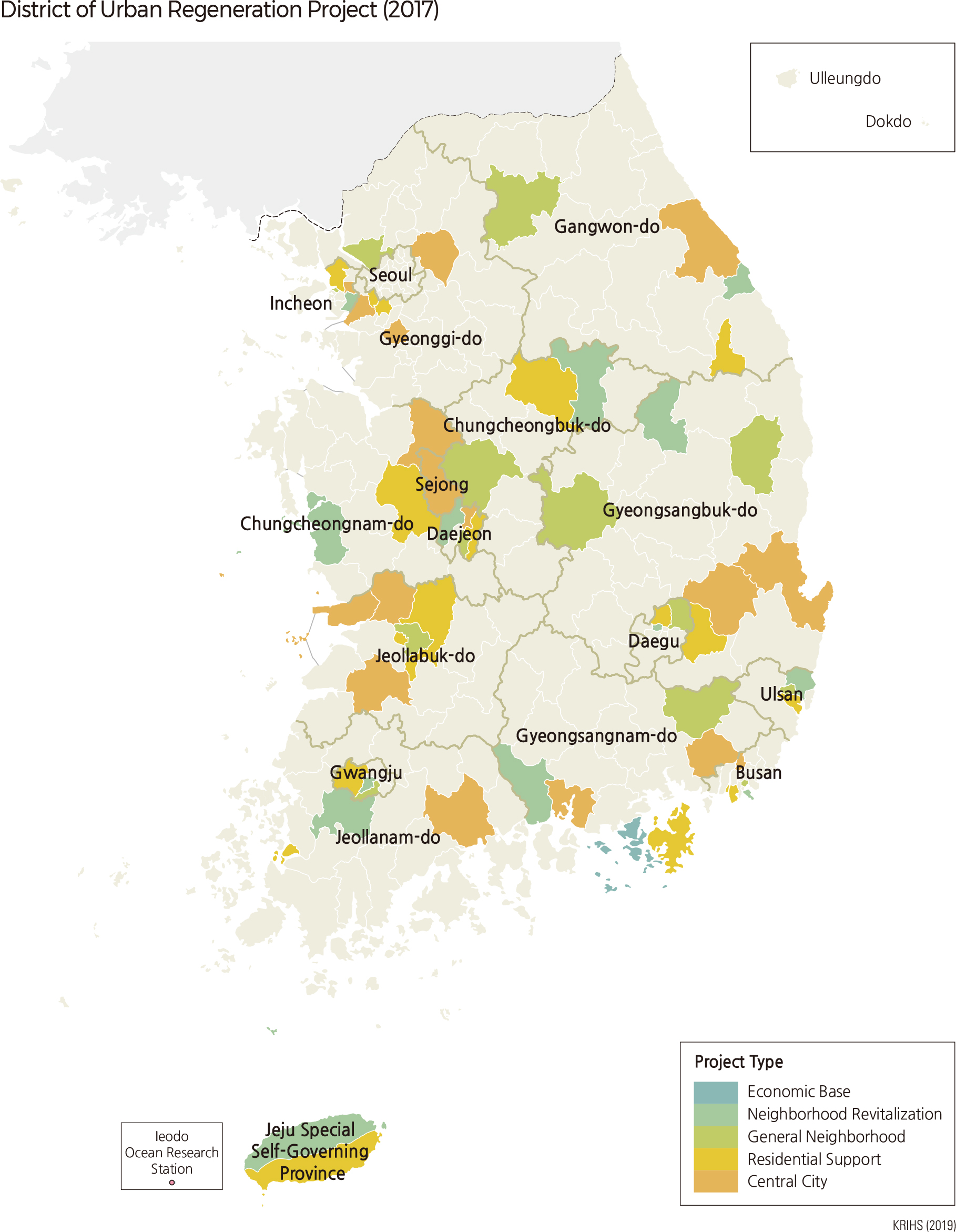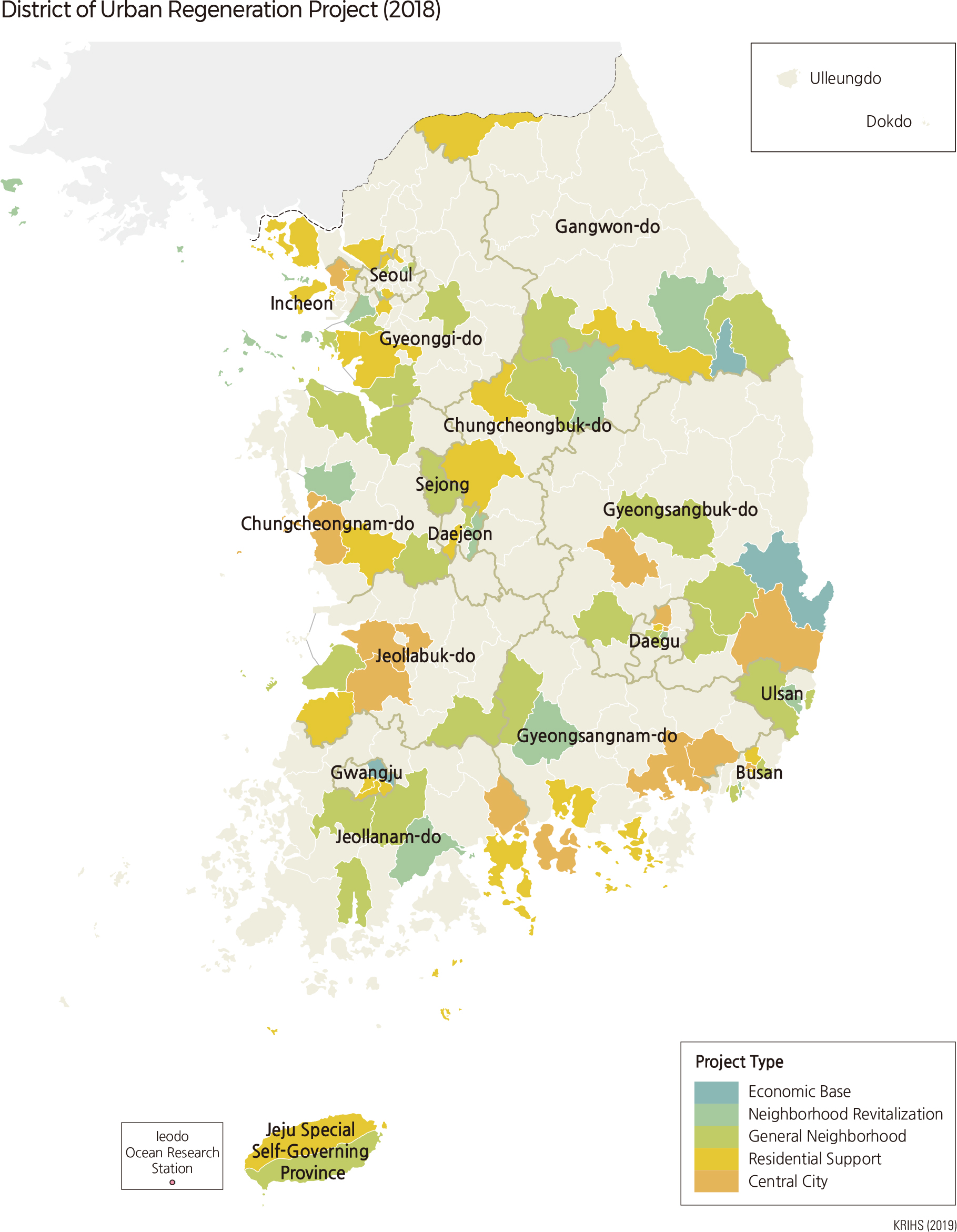English I 2019
The Metropolitan plan provides long-term development directions for two or more neighboring city and county administrative districts or promotes proper growth management by interconnecting city and county functions. It is the 20-year, long-term top-level plan in the urban planning system, and serves as a guide for sub-plans such as urban and county basic plans and management plans.
The basic urban plan is a comprehensive plan that covers not only material aspects but also socio-economic aspects such as population, industry, social development, and finance. This plan presents a future vision and a long-term development direction including the regional characteristics and planning directions and targets, the establishment of spatial structure and living areas and the distribution of populations, the use and development of land, demand, and supply by land use, environmental conservation and management, infrastructure, parks, and green spaces.
The urban management plan is a statutory plan that controls residents' private land use, that is, the maximum occupancy ratio, floor area ratio, and the number of floors in building activities. To this end, plans for the designation and modification of the use area, district, and zone, plans for the installation, maintenance and improvement of infrastructure, urban development projects under the Urban Development Act and maintenance projects under the Urban and Residential Environment Maintenance Act, plans for designating and changing districts, and district unit planning are included.
The construction of new, entirely modern towns began in earnest after the 1960s. This new town policy was centered on two goals: first, the development of the national territory and its regions; and second, the resolution of urban problems.
During the 1970s, the industrial cities were constructed in maritime regions with the primary goal of promoting heavy chemical industries. The construction of Changwon-si as a newly industrialized city with a population of 300,000 led to the use of the term “New Town.” In the 1980s, new towns in large cities were constructed in both Mok-dong and Sanggye-dong with the primary goal of providing adequate housing. Five new towns around the capital associated with this First Stage New Town Development were also constructed as a part of a plan to facilitate population dispersion by building two million homes. Daejeon-Dunsan and the Gyeryong area were constructed to facilitate the partial relocation of administrative functions out of Seoul and into the greater metropolitan area. Bundang, Ilsan, Pyeongchon, and Sanbon were all also First Stage New Towns.
By the 1990s, there were many critics of these simultaneously developed large-sized new towns, and the policy trend shifted toward the development of small-sized communities that were dispersed through the outlying areas of major metropolitan communities. Unfortunately, this attempt to redress the problems of First Stage New Towns was hindered by many serious obstacles, not the least of which included the lack of suitable infrastructure. By the turn of the last century, Second Stage New Towns were constructed as planned cities. The goal was to redress the problems created by the past approach and to supplant the smaller-sized dispersed development model with a more idealized one. Pangyo, Dongtan, Gimpo Hangang, Paju Unjeong, Yangju, Wirye, Godeok, Geomdan, Asan, and Daejeon-Doan are all examples of planned cities.
In September 2018, the designation of new towns was made when the 300,000 housing provision plan was announced to stabilize the Seoul metropolitan housing market. The designation of the new towns was made in districts such as Namyangjoo Wangsuk, Hanam Gyosan, and Incheon Gyeyang in the second announcement, and Goyang Changneung and Bucheon Daejang in the third announcement. The new towns in the latter announcement were to be developed according to the following criteria: first, a new town must be a city with less than a 30-minute commute to downtown Seoul; second, it must be a city that creates jobs; third, it must be an environmentally-friendly city where children can be raised; and fourth, it must be a city planned by experts and local governments. In order to preemptively prepare transportation measures for the construction of new towns, the government prepared a plan to expand the wide-area transportation facilities.
The Regional Regulation portion of the Seoul Metropolitan Read-justment Plan divided Seoul into three regions: an overpopulation control area, an urban growth management area, and a nature conservation area. Among the regulations included in the Readjustment Plan are the prohibition of new large company complexes, the prohibition of new large universities, restriction on large development projects, and stricter regulation of existing industrial sites.
Up to now, urban redevelopment projects such as New Town have been promoted by large-scale demolition methods, and have addressed side effects such as soaring real estate prices and aftereffects of demolition. In addition, the existing urban regeneration project was promoted centered on the establishment of regeneration plans, which resulted in inadequate performance for residents and lack of support. As a result, in response to the decline of the city, which is becoming a national problem, the government has greatly expanded its government support and promoted the Urban Regeneration New Deal Project, which residents can feel. The Urban Regeneration New Deal is a project to comprehensively rebuild the city through physical environment improvement (hardware) and residents' capacity (software) in response to the decline of the city. The goals of the Urban Regeneration New Deal includes the realization of housing welfare, the recovery of urban competitiveness, social cohesion, and the creation of jobs. |
